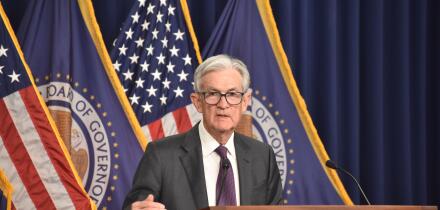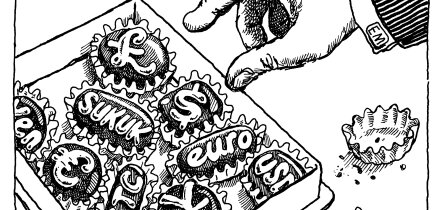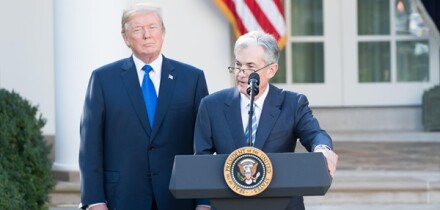The usual forward contract specifies the exact maturity date for the delivery of a predetermined amount of the underlying asset. In order to make the forward more attractive to potential customers, the forward writer may structure a contract that allows certain flexibilities on the period of delivery, frequency of deliveries and the amount in each delivery.
Recently, a new form of American-style currency forward contract has gained popularity in the over-the-counter foreign exchange markets. The holder of the American currency forward agrees to exchange a notional amount of domestic currency into foreign currency by the maturity date of the contract. However, she is given the right to exchange any portion of the notional at any time during the life of the contract, according to exchange rates pre-specified over different periods over the contract's life. Note that there are no limitations on the total number of deliveries and the amount in each delivery, except that the whole notional amount of domestic currency must be converted into foreign currency by the maturity date.
At first glance, the flexibility of converting any amount of domestic currency into foreign currency at any time during the contract's life seems highly beneficial to the holder. The corresponding optimal conversion policy to be adopted by the holder would seem quite complicated.
However, it can be argued that if the holder chooses to convert at any instant, she should optimally convert the whole notional amount (or otherwise not to convert any amount at all). To understand the argument, observe that with known values for the time to expiry and the level of prevailing exchange rate, one can determine both the exercise value of a given amount of domestic currency if that amount is converted into foreign currency immediately and the continuation value if no conversion occurs. The holder will choose to exercise optimally whenever the exercise value exceeds the continuation value.
Importantly, this exercise (or conversion) decision is independent of the amount to be exercised. Therefore, when the prevailing exchange rate reaches certain value beyond which the exercise value exceeds the continuation value, then the holder should optimally exercise the whole notional amount in one whole sum. It would be sub-optimal to leave any amount unexercised since the continuation value of the unexercised portion is below the corresponding exercise value upon conversion.
Once the optimal policy of either converting all or none is revealed, the analysis of the American currency forward resembles that of the American currency call option. If S is the exchange rate and K is the forward's delivery price (or the option's strike price), the only difference is that the exercised payoff is S K for a forward while the payoff becomes max(S K, 0) for a call option. To price an American currency forward in the Black-Scholes framework, one may apply the standard trinomial scheme, incorporating the usual dynamic programming procedure that takes the maximum of the continuation value and exercise value at each lattice node.
It would be interesting to compare the optimal exercise boundary and the early exercise premium of an American currency forward with those of the American currency call option counterpart. In the figure A, we show the optimal exercise boundary S*(*) of an American currency forward and the call option counterpart, where * is the time to expiry. We assume a constant delivery price of 50 throughout the forward's life, and the same value is used for the option's strike price. In the calculations, we assume the values of volatility, domestic interest rate and foreign interest rate to be 30%, 10% and 8%, respectively. The figure reveals that S*forward < S*option at all values of *. This result indicates that the currency forward holder optimally chooses to exercise at a lower critical exchange rate in comparison with the currency option holder. To explain this phenomenon using a financial argument, we recall the advantages and disadvantages of the early exercise decision. Upon early exercising, for both a forward and a call option, the holder gains on the foreign interest payments received by holding the foreign currency but loses on the domestic interest payments. In addition, the option holder loses on the intrinsic insurance value associated with the option--the protection against a drop in the exchange rate. Hence, the option holder should choose to exercise at a higher critical exchange rate so that the chance of losing out because of the exchange rate dropping at future times is small.
In figure B, we show the comparison of the ratio of the early exercise premium to the European value (in percentage) of an American currency forward and the call option counterpart. The same set of parameter values is adopted as those in figure A. In addition, the exchange rate and the time to expiry are taken to be 50 and 2, respectively. For both the forward and call option, we observe that the ratio of the early exercise premium to the value of the European counterpart increases with volatility, and the rate of increase is more significant for the forward. The reasons for these observations are two-fold. On the one hand, the early exercise right is more valuable to the forward holder since the net gain upon early exercising is higher compared to that of the call option. On the other hand, the value of a European forward stays constant for all volatilities while the value of a European call option increases with increasing volatility. This leads to a smaller ratio resulted for the American call option.
This week's Learning Curve was written by Yue Kuen Kwokand Ka Wo Lau, associate professor and PhD candidate, respectively, at the Hong Kong University of Science and Technology.





